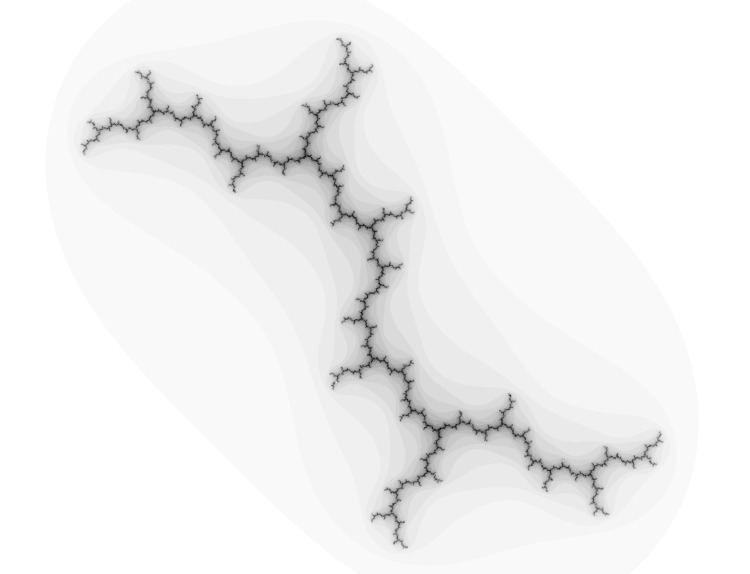 | ||
In mathematics, a dendroid is a type of topological space, satisfying the properties that it is hereditarily unicoherent (meaning that every subcontinuum of X is unicoherent), arcwise connected, and forms a continuum. The term dendroid was introduced by Bronisław Knaster lecturing at the University of Wrocław, although these spaces were studied earlier by Karol Borsuk and others.
Borsuk (1954) proved that dendroids have a fixed-point theorem: every continuous function from a dendroid to itself has a fixed point. Cook (1970) proved that every dendroid is tree-like, meaning that it has arbitrarily fine open covers whose nerve is a tree. The question of whether more generally every tree-like continuum has a fixed-point theorem, posed by Bing (1951) has been solved by David P. Bellamy
In Knaster's original publication on dendroids, in 1961, he posed the problem of characterizing the dendroids that can be embedded into the Euclidean plane, which also remains open. Another problem posed in the same year by Knaster, on the existence of an uncountable collection of dendroids with the property that no dendroid in the collection has a continuous surjection onto any other dendroid in the collection, was solved by Minc (2010) and Islas (2007).
A locally connected dendroid is called a dendrite. A cone over the Cantor set (called a Cantor fan) is an example of a dendroid that is not a dendrite.
